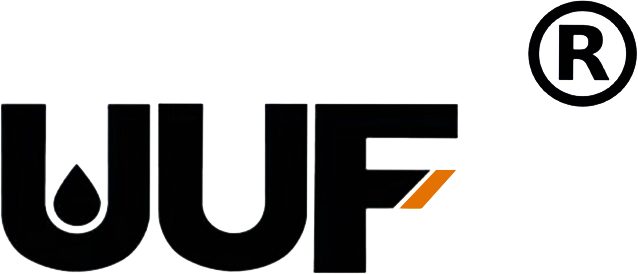Essential Tips for Negotiating Oil Seal Costs with Suppliers
Time:
2025-06-30
Essential Tips for Negotiating Oil Seal Costs with Suppliers Table of Contents Understanding the Oil Seal Market Key Factors Influencing Oil Seal Pricing Preparing for Negotiation Effective Communication Strategies Building Strong Supplier Relationships Leveraging Competition for Better Prices Negotiation Techniques to Lower Costs Finalizing Agreements and Ensuring
Essential Tips for Negotiating Oil Seal Costs with Suppliers
Table of Contents
- Understanding the Oil Seal Market
- Key Factors Influencing Oil Seal Pricing
- Preparing for Negotiation
- Effective Communication Strategies
- Building Strong Supplier Relationships
- Leveraging Competition for Better Prices
- Negotiation Techniques to Lower Costs
- Finalizing Agreements and Ensuring Compliance
- Frequently Asked Questions
Understanding the Oil Seal Market
The oil seal market is intricate and competitive, characterized by various suppliers offering a range of products. To effectively negotiate costs, we must first understand this market landscape. Oil seals are crucial components in preventing leaks in automotive engines and transmissions, ensuring optimal performance and longevity. Knowledge of the latest trends, technology advancements, and industry standards can provide an advantageous position when negotiating with suppliers.
Key Factors Influencing Oil Seal Pricing
Various factors contribute to the pricing of oil seals. Understanding these elements is essential for effective negotiation.
Material Quality
The type of materials used in manufacturing oil seals greatly impacts their cost. High-performance seals made from advanced materials may command a higher price, but they often provide superior durability and reliability.
Production Volume
Order quantities can also affect pricing. Suppliers may offer discounts for bulk purchases, making it crucial to assess your inventory needs before negotiating.
Supplier Reputation
Established suppliers may charge more due to their reliability and quality assurance. However, they often provide better support and product consistency, which can justify the higher costs.
Market Demand
The current demand for oil seals in the automotive sector can influence prices significantly. Keeping an eye on market trends can help you gauge when to negotiate effectively.
Preparing for Negotiation
Preparation is key to achieving favorable outcomes in any negotiation. Here are some essential steps to take before entering discussions with suppliers.
Research Potential Suppliers
Investigate potential suppliers' backgrounds, including their production capabilities, delivery times, and customer feedback. This information can give you leverage during negotiations.
Determine Your Budget
Knowing your budget upfront helps establish clear limits. It allows you to assess offers critically and negotiate within your financial constraints.
Gather Competitive Quotes
Request quotes from multiple suppliers to compare prices and terms. This information equips you with data to negotiate better deals.
Effective Communication Strategies
Communication plays a vital role in successful negotiations. Adopt the following strategies to enhance your discussions with suppliers.
Be Clear and Concise
Clearly articulate your needs and expectations. Being straightforward eliminates misunderstandings and sets the foundation for productive negotiations.
Listen Actively
Listening to the supplier's perspective helps build rapport and understanding. It also allows you to address concerns and find common ground more effectively.
Use Positive Language
Maintain a positive tone throughout discussions. Encouraging dialogue rather than confrontation fosters a collaborative atmosphere.
Building Strong Supplier Relationships
Long-term supplier relationships can lead to better pricing and terms. Establishing trust and rapport is essential for achieving this.
Regular Communication
Stay in touch with suppliers beyond negotiations. Regular communication helps keep your business top-of-mind and strengthens the relationship.
Provide Feedback
Offering constructive feedback can encourage suppliers to improve their offerings and service. It shows that you value the relationship and are invested in mutual success.
Consider Partnership Opportunities
Explore opportunities for partnerships or collaborations. Working together on specific projects can lead to exclusive deals and pricing advantages.
Leveraging Competition for Better Prices
Competition among suppliers can work in your favor. Here’s how to leverage it effectively.
Highlight Competitive Quotes
When discussing prices with your preferred supplier, reference competitive quotes from others. This tactic encourages suppliers to match or beat those offers.
Evaluate Suppliers’ Unique Selling Points
Understanding what differentiates various suppliers allows you to negotiate based not only on price but also on value. Highlighting these points can make your preferred supplier more amenable to negotiation.
Negotiation Techniques to Lower Costs
Employing specific negotiation techniques can help secure lower prices on oil seals.
Start with a Lower Offer
Begin negotiations with a lower price than you’re willing to pay. This strategy provides room for compromise and encourages suppliers to present their best offers.
Be Willing to Walk Away
Demonstrating the willingness to walk away from a deal can strengthen your position. It signals to suppliers that you value your budget and are not desperate for a deal.
Offer Long-Term Commitment
If feasible, consider negotiating for long-term contracts in exchange for better pricing. Suppliers often reward commitment with lower rates.
Finalizing Agreements and Ensuring Compliance
Once negotiations are complete, it’s essential to finalize agreements properly.
Review Terms and Conditions
Thoroughly review all terms and conditions before signing. Ensure that the agreement aligns with what was discussed during negotiations.
Establish Performance Metrics
Defining performance metrics helps ensure suppliers meet your expectations. It can include delivery times, product quality, and responsiveness to inquiries.
Maintain an Open Line for Communication
After finalizing agreements, keep the lines of communication open. This practice fosters a collaborative relationship and enables you to address issues as they arise.
Frequently Asked Questions
What are the typical costs associated with oil seals?
Oil seal costs vary based on material, size, and supplier. Generally, prices can range from a few cents to several dollars per unit.
How can I determine if a supplier's price is fair?
Conduct market research and gather multiple quotes to compare prices. This information helps assess if a supplier's price is competitive.
What should I do if a supplier is unwilling to negotiate?
If a supplier is resistant to negotiation, consider exploring other options. Sometimes, simply indicating your willingness to look elsewhere can prompt them to re-evaluate their offer.
Is it better to buy in bulk to save costs?
Yes, purchasing in bulk often leads to significant savings. However, ensure that your inventory levels justify such a decision.
How can I ensure the quality of the oil seals I purchase?
Request samples, check certifications, and read reviews from other customers to evaluate the quality of oil seals before making a purchase.
Conclusion
Negotiating oil seal costs with suppliers is a multifaceted process that requires preparation, effective communication, and a deep understanding of the market. By employing the strategies outlined in this article, we can improve our negotiation skills and achieve better pricing, ultimately enhancing our bottom line. Investing time in building strong supplier relationships and leveraging competition can create a sustainable advantage in securing high-quality oil seals at competitive prices.
Keyword:
Oil seal cost


















